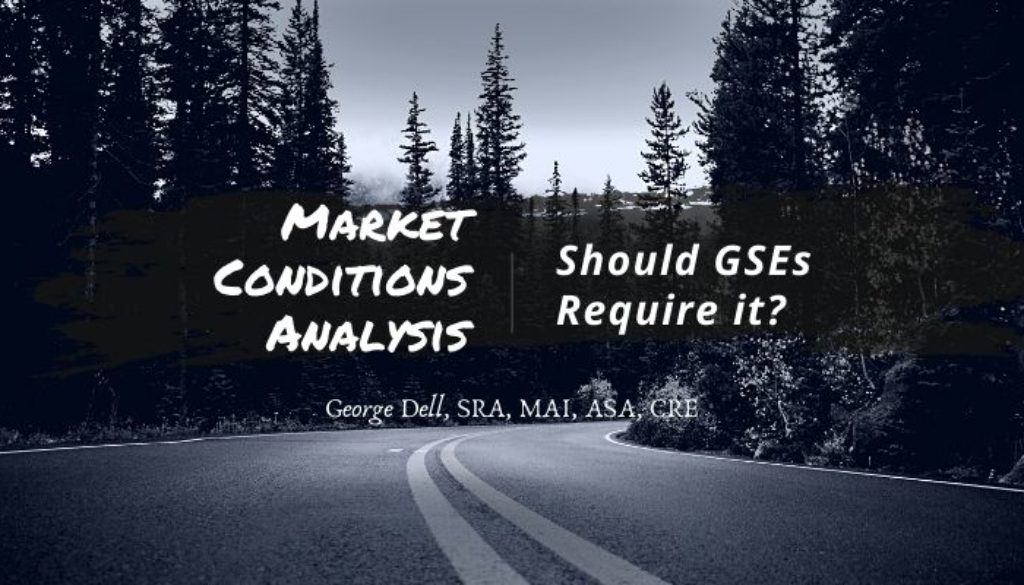Per FreddieMac (Scott Reuter, Chief Appraiser)[1] recently stated: “Appraisers need to spend time on developing a market conditions analysis in the appraisal. It’s truly the backbone of the appraisal.”
Per the Fannie Mae Selling Guide: “The date of sale and the time adjustment (market conditions) are critical elements in determining an accurate value because the appraisal is based on a specific date in time (effective date of appraisal). The comparable sales being considered must be analyzed by the appraiser . . .”
The FreddieMac Seller/Servicer Guide states: “The appraisal report must include time adjustments to reflect any change in market conditions over the period analyzed. This is essential to determine an accurate market value for the subject property. Time adjustments reflect market condition changes…”
Valuation/appraisal theory insists that “appraisal is market analysis.”
Market conditions analysis gives best results with human-machine optimization. The computer provides repeatable algorithms and visual interface. The human expert excels at model fit.
Should market analysis be required?
If we believe that appraisal is market analysis, the answer is answered in the question itself. If we analyze using only three hand-picked comps, or some other scientific method, it is still a study of the market. (The subject may or may not be a part of the ‘for sale’ market.)
We experienced the 1004MC “Market Conditions” form. Unfortunately, it failed to deliver due to fundamental errors in data specification, contradictory definitions, and algorithmic process (specifically, information loss due to date grouping), and arbitrary time-period requirement.[2]
As we have explored this topic over the past 20 years, we have come to some definite conclusions regarding what is required. The analysis must be factual, rigorous, and consistent:
- The ideal data set is the CMS© (Competitive Market Segment).
- The ideal time segment includes the oldest useful comparable sale.
- Outliers and non-linear results must be identified and handled appropriately.
This process reflects modern data science methods. In the Stats, Graphs, and Data Science class, we call this method EBV© (Evidence Based Valuation). We present a method of reduction of the initial data selection to be as objective as possible, instead of the subjective “trust me” method of picking some comps.
In the class, we emphasize the data science maxim: 80% of the answer lies in getting the data right! Once you get the data right (actual comparables), expert judgment is supported, and difficult to challenge. Visuals and summary numbers clarify rather than confound. They become self-explanatory.
[1] Scott will be a guest presenter at our WYN2K Webinar March 18 Register Here
[2] See George’s two journal articles on this topic at The Appraisal Journal
